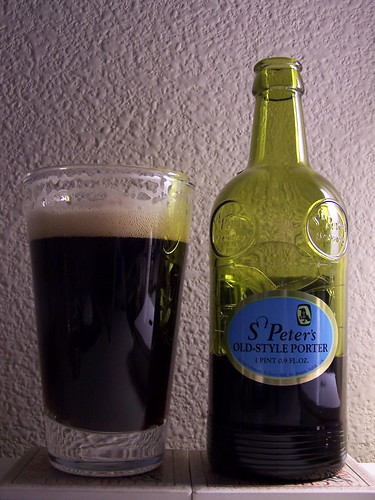So I've been using a service called Site Meter to track visitors to my blog. It gives me all sorts of awesome information: where people are visiting from, what browsers they're using, what OS they're using, even their monitor resolution! Slightly Big Brother-esque, I know, but it's still sweet.
So, over the last few days, I've had visitors from IP addresses in locations where I'm pretty sure I don't know anyone. Not that there's anything wrong with that, but it'd be cool to know who you are. So, if I don't know you (and even if I do), take a minute to sign my Guestbook and tell me who you are! I've had visitors from France, the UK, New Zealand, and now Spain. Seriously, who are you???
Thursday, April 2, 2009
Cricket Hill Brewing Company

Yesterday was one of the most awesome exBEERiences I've had yet (I've now coined 3 new words: beerkend, beervent, and exbeerience. Write those down; they'll be on the SATs one day). I took the day off from work and spent the day at the Cricket Hill Brewing Company in Fairfield, NJ. The owner of Cricket Hill, Rick Reed, and the head brewer, Dave Manka, were nice enough to invite me to brew a batch of beer with them, specifically their East Coast Lager, a crisp, easy-drinking, light lager with a faint, but wonderful hop profile.
I spent most of my time with Joe (can't remember his last name), the assistant brewer, who was in charge of brewing that day. He was a really great host and teacher, walking me through the process and comparing each step to what I would do at the homebrew level. I found that it's really not that different, except that instead of brewing 5 gallons, we brewed 465 gallons. Instead of using 14 pounds of grain, we used roughly 700 pounds. Instead of using a couple ounces of hops, we used nearly 7 pounds. If you've never seen or smelled 7 pounds of hops before, it's kind of like awesomeness with more awesome on top. Joe let me work some of the valves on the brewhouse throughout the day, and I got to add the hops throughout the boil (equally awesome to 7 pounds of hops, is adding those hops to 465 gallons of boiling wort). I also got the lucky job of cleaning the 700 lbs of grain out of the mash tun at the end. Though hard work, it was definitely a lot of fun...and it smelled real nice, sort of like victory.
Of course there was plenty of drinking to be done too. Over the course of the 8.5 hours I spent there, I sampled their East Coast Lager, Hopnotic IPA, Paymaster's Porter, and the yet-to-be-released Maibock (they're bottling it today actually). I left with a 12 bottle variety back that includes the East Coast Lager, American Ale, Hopnotic IPA, and their Colonel Blide's (a cask style ESB). The one thing I found interesting about their beers is that they were all incredibly smooth. They even mentioned to me that they're not your typical craft brewery making over-the-top "extreme" beers--they're aiming for drinkable session beers for your average beer drinker. I think the East Coast Lager in particular is a really great gateway beer to introduce BMC (Bud Miller Coors) drinkers to the world of craft brewing.
It was definitely a day to remember--thanks again to Rick, Dave, and Joe over at the Cricket Hill Brewing Company! I'll definitely be back to help you bottle one Thursday night!
Tuesday, March 31, 2009
St. Peter's Old-Style Porter

Last night I enjoyed St. Peter's Old-Style Porter with dinner, and despite the green bottle (see 2 posts ago), I was pleasantly surprised. Though rarely made this way today, traditional porter is a blend of an older, more mature ale and a younger, lighter one. This process allowed porter brewers to save only a portion of their batches for aging and blend the other portion with older batches for immediate distribution.
St. Peter's Old-Style Porter is brewed in this traditional manner, which provides a unique character to the beer. There are hints of "age" in the beer--a very mild sourness, some oxidation, etc--but the blending mellows these aged notes with a fresher brewed beer, allowing for an incredibly complex flavor profile. There was even some skunkiness from the green bottle, but I purposely chose a bottle from the back of the shelf at the store (where it's darker) to minimize the chance of the beer being light-struck. The nice thing about a darker, more robust beer is that these skunked flavors and aromas quickly dissipate and are overwhelmed by the beer's true character. I'm definitely looking forward to trying a few more of St. Peter's beers...!now if only they would drop the green bottles!
Subscribe to:
Posts (Atom)
